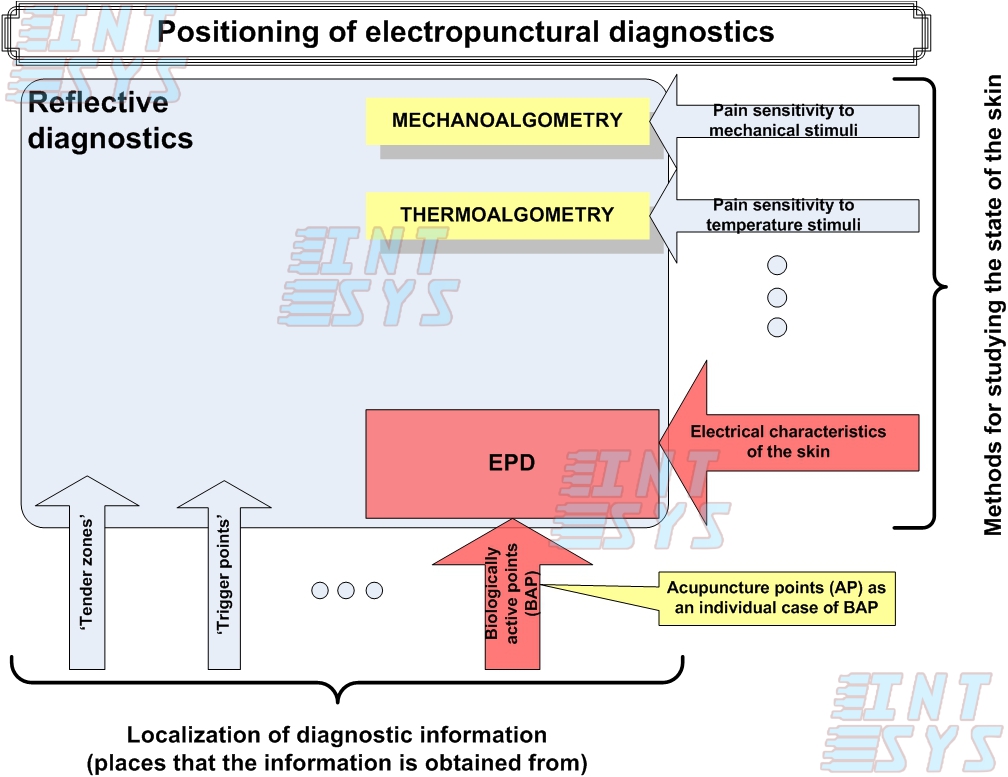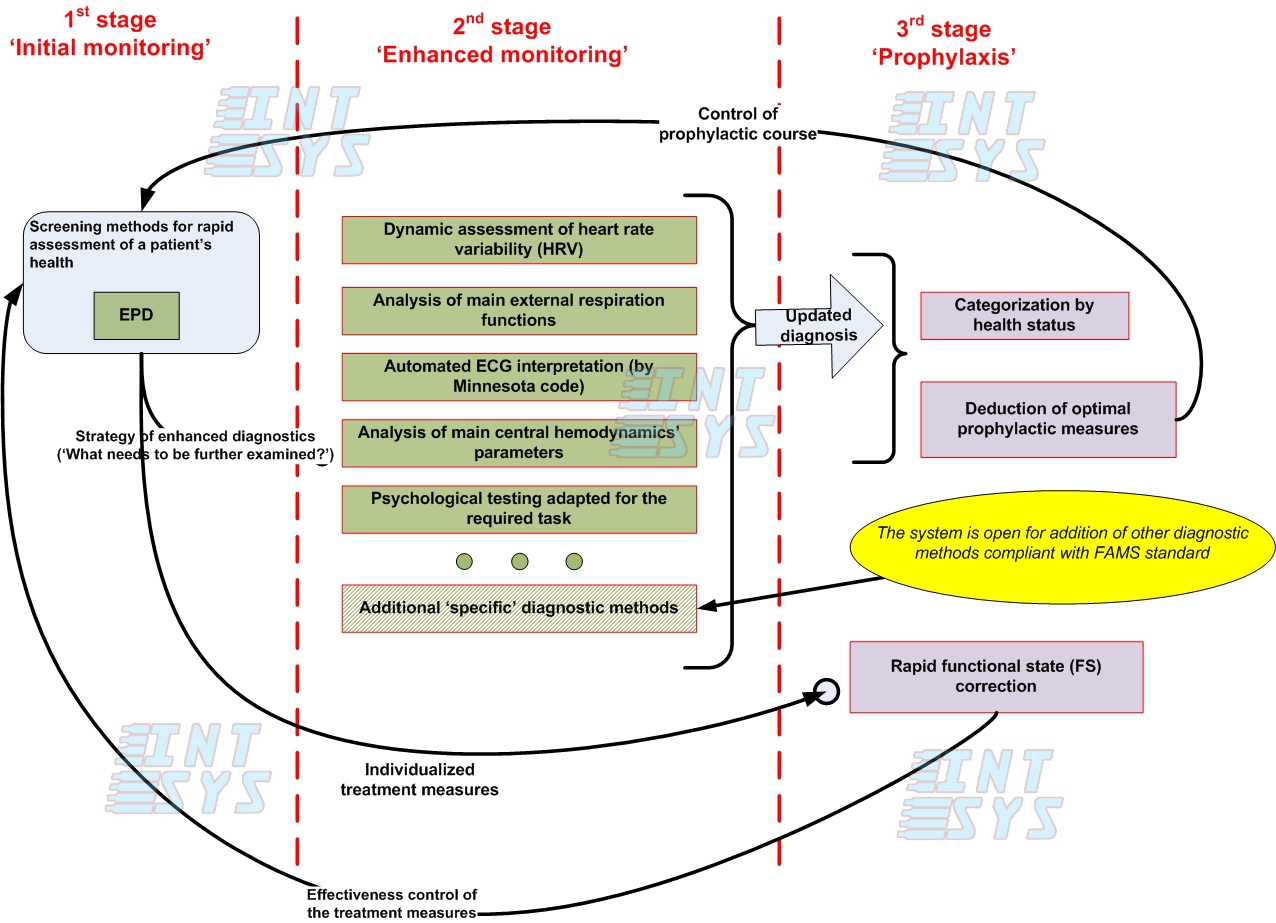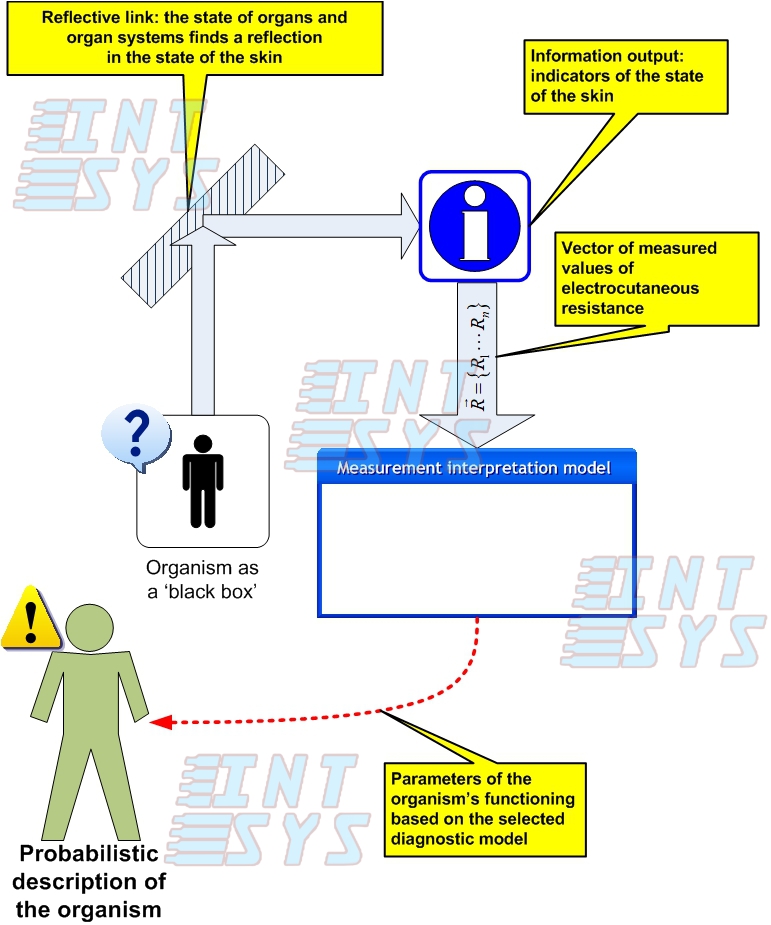What is 'Prognoz'?
‘Prognoz’ EPD is the flagship product of NTK Integrative Systems.
‘Prognoz’ is a system of electropunctural diagnostics (EPD).
EPD, in turn, is a type of reflective diagnostics (from Latin reflecto – 'I reflect'). The idea behind reflective diagnostics, or reflexodiagnostics as it is commonly called, is to obtain information about the functioning of a person’s body as a whole or its individual systems based on the analysis of parameters obtained from a certain area on the human skin, i.e. use the parameters of the skin as a reflection of processes occurring in the internal organs. The existence of such a connection has been proved both theoretically and experimentally.
It should be noted that in modern scientific circles there is no well-established position about what is ‘inside’ this connection between the processes in the body and their reflection on the skin, and the ways in which it can be systematized. However, due to ‘Prognoz’ being based on certain classic scientific principles, this EPD system is distanced enough from the most controversial areas in the field of reflexodiagnostics.
Having been developed as an integrating link of Flexible Automated Medical System (FAMS - see pic.) responsible for determining the strategy for in-depth diagnostics and disease prevention, the methodology of ‘Prognoz’ EPD implies the so-called cybernetic approach to refleсtive diagnostics. Within this approach the patient's body, both the organ systems and any of their possible connection with the parameters of the skin, is presented as a hypothetic ‘black box’, in which only the values of the 'indicators' on the box are of interest to the operator (doctor, researcher etc.). In our case, the values ('a set of informational parameters') refer to active electrical resistance, and 'indicators' are a number of predetermined points on the patient's skin. Further on this parameter will be referred to by its historically established designation: electrocutaneous resistance (ECR).
To interpret the obtained data, various diagnostic models can be used, which are capable of describing a variety of objects within, and conditions of, the organism.
The most common models include:
- statistical models based on an extensive database of measured ECR values for clinically diagnosed patients;
- the so-called ‘archaic’ model, the interpretation in which is close to the diagnostic models of traditional Chinese medicine. In this model, the supposed acupunctural channels (AC) are analyzed.
It should be stressed that the aforementioned cybernetic approach is most effective when some sort of 'signal' is sent to a hypothetic 'black box', and then the received 'response' is compared with the values of the 'indicators' before the 'signal' was input. In the broad sense of the term, a 'signal' can be a diagnostic stress test, as well as a therapeutic or prophylactic procedure. It goes without saying that during such testing the condition must be maintained for the measurement process to have a negligible impact on the object of study.
Depending on the research objectives, which also determine the type of stress test for the subject, general functional reserves of the body and its individual systems can be analyzed with 'Prognoz' EPD; functional reserves specific to a particular professional activity and many other indicators can be analyzed as well. To achieve this, dynamic diagnostic models specific to the relevant stress tests are used. Among the stress tests the following should be distinguished: specific physical activity, acoustic, visual and other ‘imitating influences’, and various kinds of health improvement procedures.
By its definition, ‘Prognoz’ EPD was designed for repeated dynamic studies and individualized check measurements. Therefore, in combination with the cybernetic approach adopted, it is most effective in a fairly wide range of different dynamic studies.
The ‘Prognoz’ system can be positioned as a 'testing' EPD, since it:
- uses a patented method of registering ECR, which encompasses a sensible compromise between the minimum degree of impact on the object of measurement and a high level of resluts reproducibility;
- was initially aimed at automated measurements, which allows to radically limit the subjective component of measurement error.
It should be noted that the above factors allow ‘Prognoz’ EPD to be combined with almost any health improvement system in an optimal manner, which is demonstrated by the case record of its use in Russia and abroad.




